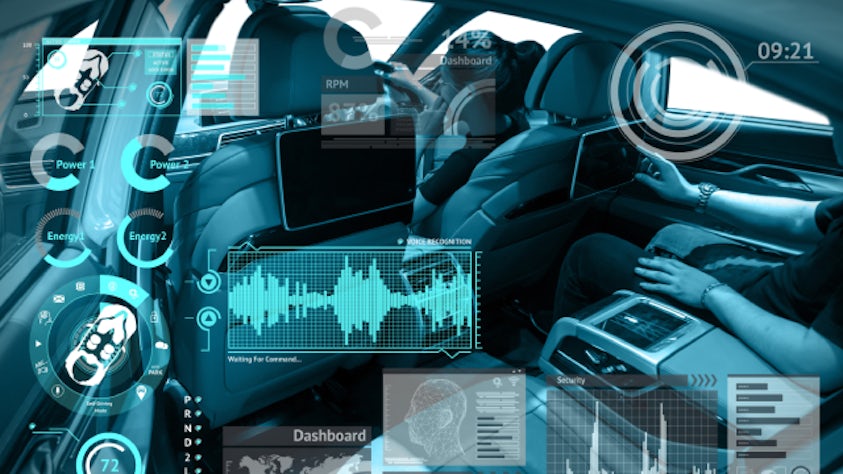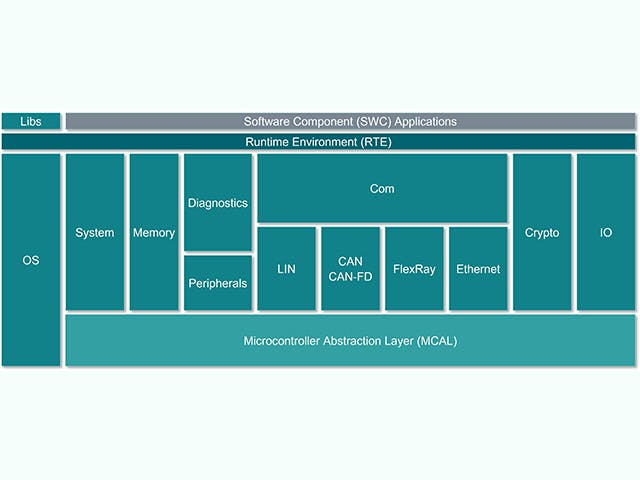Quelle est la différence entre Ethernet et Ethernet automobile ?
Les différences entre Ethernet et Ethernet automobile se situent au niveau de la couche physique. La communication ci-dessus est IP comme pour les autres types d’Ethernet. La couche physique a été optimisée autour des cas d’utilisation automobiles, 100Base-T1 et 1000Base-T1 sont des réseaux commutés en tant qu’Ethernet standard, mais les émetteurs-récepteurs et les câbles Phy sont différents, utilisant une paire torsadée unique à moindre coût avec une communication en duplex intégral, plutôt qu’une paire torsadée double, cela peut être une paire torsadée blindée (STP) ou non blindée (UTP) selon les besoins. 10Base-T1S est également une paire torsadée unique, mais un bus multi-points (comme CAN), plutôt qu’un réseau commuté.
Ceci est différent du diagnostic sur IP (DoIP) utilisé pour la connexion au socket de diagnostic SAE J1962 par de nombreux équipementiers automobiles, qui est une paire hergonale standard 100Base-TX, 4 fils, double paire torsadée.
Pourquoi Ethernet est-il utilisé dans l’automobile ?
La communication entre les unités de contrôle électronique (ECU) est devenue plus complexe et le débit du réseau a augmenté en bande passante avec l’augmentation des fonctionnalités logicielles dans les voitures. La communication basée sur Ethernet fournit une bande passante importante et une plus grande flexibilité pour intégrer les services cloud. Et même si elle peut entraîner une série de normes et de protocoles plus complexes, elle est plus évolutive que les réseaux automobiles spécifiques qui utilisent le même logiciel de communication, ce qui facilite les mises à jour au fil du temps.
Quelle est la bande passante de l’Ethernet automobile ?
La première version de l’Ethernet automobile développée par Broadcom sous le nom de BroadR-Reach, puis normalisée par l’OPEN Alliance SIG sous le nom d’IEEE 100Base-T1, a un débit en bauds de 100 Mbits/s. Par la suite, 1000Base-T1 a été standardisé en offrant 1 Gbit/s, et 10Base-T1S est le dernier en date à proposer une couche physique à moindre coût prenant en charge 10 Mbits/s pour fournir une alternative aux versions FlexRay et à haut débit en bauds du bus CAN. Plusieurs vitesses de transmission d’Ethernet peuvent être utilisées ensemble sur la même architecture, sans passerelle complexe de différents protocoles, ce qui facilite l’évolutivité sur la durée de vie d’une architecture E/E donnée.
Respecter la législation et les exigences de sécurité grâce à la communication Ethernet automobile
Les informations sur les réseaux de véhicules sont d’une criticité variable – certaines sont liées à la sécurité ou à la législation, tandis que d’autres sont destinées au confort ou à la commodité du conducteur. La nécessité simultanée de communiquer des informations relatives à la sécurité et des informations non liées à la sécurité introduit des exigences pour le traitement et la présentation de ces données et la conception du réseau. Les réseaux Ethernet offrent des options de configuration supplémentaires pour les concepteurs de réseaux. Ils peuvent utiliser différents niveaux de protocoles, de méthodes et d’éléments pour s’assurer que les données, les signaux et les services prioritaires sont disponibles rapidement tout en autorisant plusieurs types de données sur le même réseau physique.
Vérification précoce de la conception automobile
L'Ethernet automobile offre de nombreux avantages supplémentaires comparé aux protocoles de communication automobile traditionnels. Cependant, il doit être bien conçu pour exploiter pleinement son potentiel. Les constructeurs ont également défini des règles et des normes de conception pour indiquer aux ingénieurs chargés de la conception des réseaux quelles mesures de protection utiliser lors de la conception des systèmes. Les solutions logicielles automobiles aident à la mise en place d’un modèle de conception, en permettant des contrôles de cohérence pour guider le concepteur vers les problèmes et en s’assurant que les réseaux sont corrects dès la conception et décrits de manière cohérente dans les sorties de configuration logicielle.


